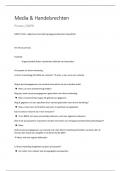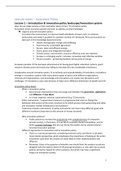Samenvatting
Summary Accounting IBM1 Semester 1
- Vak
- Accounting
- Instelling
- Arteveldehogeschool (Artevelde)
Summary for the accounting course in IBM by Nico Deprez. Summary is based on the powerpoint and covers all chapters needed for the exam. Does not include all excersises.
[Meer zien]













